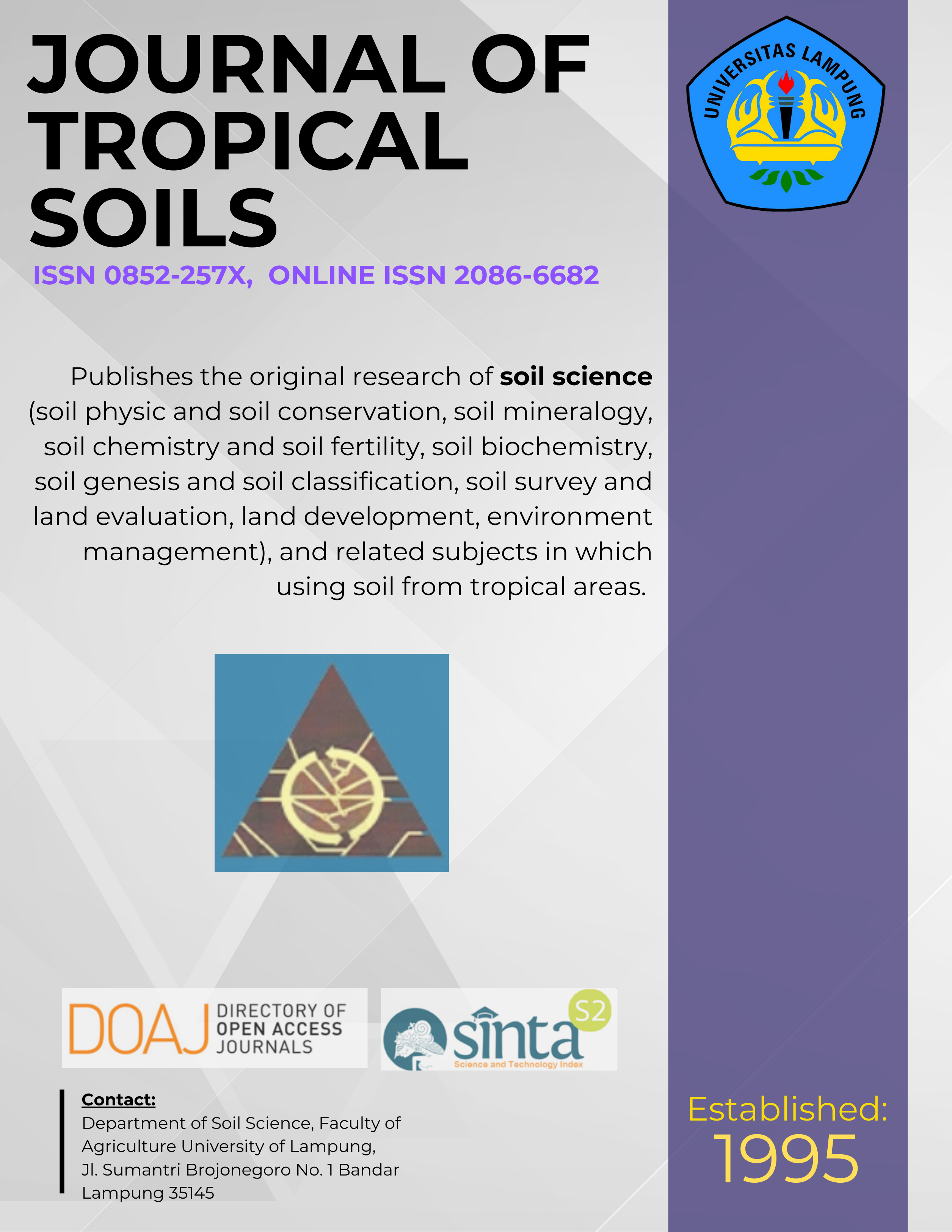Assessment Erosion 3D Hazard with USLE and Surfer Tool: A Case Study of Sumani Watershed in West Sumatra Indonesia
Main Article Content
Abstract
Quantitative evaluation of soil erosion rate is an important basic to investigate and improve land use system, which has not been sufficiently conducted in Indonesia. The Universal Soil Loss Equation (USLE) and Erosion Three Dimension (E3D) in Surfer were used to identify characteristic of dominant erosion factors in Sumani Watershed in West Sumatra, Indonesia using data soil survey and monitoring sediment yield in outlet watershed. Climatology data from three stations were used to calculate Rainfall erosivity (R) factor. As many as101 sampling sites were used to investigate soil erodibility (K-factor) with physico-chemical laboratory analysis. Digital elevation model (DEM) of Sumani Watershed was used to calculate slope length and Steepness (LS-factor). Landsat TM imagery and field survey were used to determine crop management (C-factor) and conservation practices (P-factor). Calculating soil loss and map of USLE factor were determined by Kriging method in Surfer 9. Sumani Watershed had erosion hazard in criteria as: severe to extreme severe (26.23%), moderate (24.59%) and very low to low (49.18%). Annual average soil loss for Sumani watershed was 76.70 Mg ha-1 y-1 in 2011. Upland area was designated as having a severe to extreme severe erosion hazard compared to lowland which was designated as having very less to moderate. On the other land, soil eroded from upland were deposited in lowland. These results were verified by comparing one year’s sediment yield observation on the outlet of the watershed. Land use (C-factor), rainfall erosivity (R- factor), soil erodibility (K-factor), slope length and steepness (LS-factor) were dominant factors that affected soil erosion. Traditional soil conservation practices were applied by farmer for a long time such as terrace in Sawah. The USLE model in Surfer was used to identify specific regions susceptible to soil erosion by water and was also applied to identify suitable sites to conduct soil conservation planning in Sumani Watershed.
[How to Cite : Aflizar, R Afrizal, T Masunaga. 2013. Assessment Erosion 3D Hazard with USLE and Surfer Tool: A Case Study of Sumani Watershed in West Sumatra Indonesia. J Trop Soils, 18 (1): 81-92. doi: 10.5400/jts.2013.18.1.81]
[Permalink/DOI: www.dx.doi.org/10.5400/jts.2013.18.1.81]
Downloads
Article Details
Section
License for Authors
Authors who publish with this journal agree to the following terms:
- Authors retain copyright and grant the journal right of first publication with the work simultaneously licensed under a Creative Commons Attribution License that allows others to share the work with an acknowledgement of the work's authorship and initial publication in this journal.
- Authors are able to enter into separate, additional contractual arrangements for the non-exclusive distribution of the journal's published version of the work (e.g., post it to an institutional repository or publish it in a book), with an acknowledgement of its initial publication in this journal.
- Authors are permitted and encouraged to post their work online (e.g., in institutional repositories or on their website) prior to and during the submission process, as it can lead to productive exchanges, as well as earlier and greater citation of published work (See The Effect of Open Access).
License for Regular Users
Other regular users who want to cite, distribute, remix, tweak, and build upon author’s works, even for commercial purposes, should acknowledge the work’s authorship and initial publication in this journal, licensed under a Creative Commons Attribution License.

